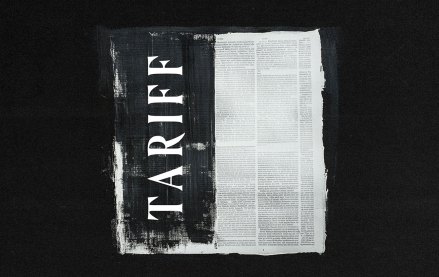Register by Jan 13 to save on passes and connect with marketers from Uber, Bose and more
Holdco excuse speak, translated: a translator for agency turmoil

The squeeze on agency holding companies keeps getting tighter. WPP’s year-end revenue slump, paired with lackluster outlook for 2025, is just the latest twist in an ongoing identity crisis for legacy ad giants. In fact, things have gotten so dire that holdco CEOs have mastered a specialized dialect, one designed to downplay their troubles while keeping investors from panicking.
Here’s a guide to what they say versus what they really (might) mean.
What they say: “We are in a period of transformation.”
What they mean: “We have no idea how to fix this, but we’ll throw around words like ‘AI’ and ‘efficiency’ until the next earnings call.”
What they say: “We are optimizing our operations to drive long-term growth.”
What they mean: “We’re merging underperforming agencies and cutting costs.”
What they say: “Our transformational strategy is delivering results.”
What they mean: “We’ve spent years restructuring, yet investors are still waiting to see meaningful growth.”
What they say: “Our performance reflects a challenging macroeconomic environment.”
What they mean: “Clients are spending less and we have no way to make up for the shortfall.”
What they say: “We remain committed to our creative heritage.”
What they mean: “We’re firing senior creatives and replacing them with AI-generated mood boards.”
What they say: “AI and automation will enhance creativity.”
What they mean: “AI will replace more jobs, and we hope no one questions whether that actually leads to better results for clients.”
What they say: “We continue to invest in growth areas like retail media.”
What they mean: “We’re late to the retail media party and clients still don’t see us as leaders in this space.”
What they say: “We’re seeing strong momentum in principle-based buying.”
What they mean: “Arbitrage FTW.”
What they say: “Clients are responding well to our principle-based buying framework.”
What they mean: “Clients don’t fully understand what this means but as long as it doesn’t cost them more, they’ll go along with it.”
What they say: “Our data strategy is unlocking new opportunities.”
What they mean: “We’ve launched yet another data strategy that sounds promising but lacks a clear path to revenue.”
What they say: “We remain focused on operational efficiency.”
What they mean: “Layoffs and budget cuts are coming. We’re coming it ‘efficiency’ to sound strategic.”
What they say: “Global market shifts are impacting our operations.”
What they mean: “We’re scrambling to figure out how new tariffs will affect ad spend but we have no plan beyond waiting to see what happens.”
What they say: “We are well-positioned for the future.”
What they mean: “We hope next quarter isn’t worse than this one.”
What they say: “Economic uncertainty is impacting client-decision making.”
What they mean: “Clients are delaying spend, demanding more work for less money and re-evaluating whether they even need a holdco.”
More in Marketing

What does media spend look like for 2026? It could be worse — and it might be
Forecasts for 2026 media spend range from 6.6% on the lower end to over 10% but the primary beneficiaries will be commerce, social and search.

Pitch deck: How Amazon is emerging as the proof layer for TV spend
Amazon is positioning itself to advertisers as the “first-stop shop” for planning, buying, optimizing and measuring TV.

Here are the 2025 brand winners and losers of tariffs
Tariffs completely upended the retail industry in 2025 — and no company was left unscathed.







